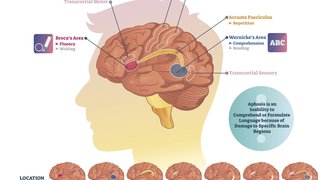
Nearly 800,000 Americans – enough people to fill AT&T Stadium 10 times – will have a stroke this year. Stroke is the leading cause of disability in America and the fifth-leading cause of death.
Thanks to improved stroke treatment, the death rate from strokes has declined over the past 20 years. However, many people still don’t recognize stroke symptoms or realize strokes are medical emergencies. For someone suffering from a stroke, fast action can make the difference between mild or severe disability – or even life and death.
Stroke education and community outreach are improving awareness in North Texas. FAST is a big part of that success.
Use FAST to identify a stroke
The acronym FAST is a helpful technique for quickly recognizing common signs or symptoms of a stroke and taking action. FAST stands for:
- Face – Ask the person to smile. Is one or both sides of the face drooping?
- Arms – Ask the person to raise both arms. Does one side drift downward? Is there weakness or numbness on one side?
- Speech – Does the person have slurred or garbled speech? Can he/she repeat simple phrases?
- Time – Call 911 for immediate medical attention if you notice one or more of these signs. Also, take note of when symptoms began.
I can’t overstate the importance of the “T” for time factor. It’s the only part of the acronym that isn’t a sign or symptom, but it’s vital to include because quick action is critical for acute stroke treatments to be effective.
The faster a person suffering from a stroke gets medical attention at a certified stroke center, the greater the chance we can save his or her life and reverse the long-term disabling effects of stroke.
Signs and Symptoms of a Stroke
See a stroke, save a life.
Know the signs of a stroke and act FAST to save a life.
Treating different types of stroke
There are two types of stroke, and time is vital to successful treatment in both cases.
The first type is ischemic stroke, which occurs when a blood clot or plaque blocks a blood vessel in the brain. About 85 percent of all strokes in the United States are ischemic.
We treat acutely ischemic stroke with a clot-busting drug called tissue plasminogen activator (tPA). The drug dissolves the clot, and blood flow to the affected part of the brain improves. If tPA is given within four and a half hours of an ischemic stroke, the patient has a better chance of further recovery.
If patients receive this medication within three hours, about thirty percent more have been seen to improve compared to those who don’t receive it. And typically about 12 to 13 percent of those in the within-three-hours group recuperate to near normal condition. Unfortunately, too many stroke victims don’t make it to the hospital in time for tPA treatment.
Surgery to extract clots is also an option in some cases. We’re often able to perform an endovascular (blood vessel) procedure within six hours after stroke symptoms first appear. In some cases, with specialized imaging, this window of time can be longer.
The other type of stroke – hemorrhagic stroke – represents the other 15 percent of all stroke cases, yet it’s responsible for about 40 percent of all stroke deaths. During a hemorrhagic stroke, blood spills into or around the brain, creates swelling and pressure, and damages brain cells and tissue.
For hemorrhagic stroke, we often use drugs to reduce blood pressure and work on reducing the aftereffects of the bleed. Again, this is an emergency treatment, so response time is a major factor. Afterward, we may perform surgery to repair ruptured blood vessel abnormalities such as aneurysms. Patients are closely monitored in specialized neurosciences units that have been shown to improve outcomes.
Can I prevent a stroke?
Many strokes can be prevented. Stroke prevention starts with a proper diet, plenty of exercise, and a healthy lifestyle. In some cases, medication is an option for reducing stroke risk factors.
High blood pressure is the single greatest risk factor many people can control. It’s a good idea to check your blood pressure regularly and work with your doctor to control it.
Other risk factors you should work with your doctor to control include:
If you or someone you love is at risk for stroke, it’s not too late to talk with your doctor and make appropriate lifestyle changes.
- Diabetes
- High cholesterol
- Heart disease
- Inactivity
- Abnormal heart rhythm (atrial fibrillation, or AFib)
Be healthy and be FAST
Be prepared and be FAST if you recognize the signs of a stroke. Take a minute to memorize the acronym so you can act quickly. Time saves brain, and fast action saves thousands of lives and prevents disability. With these tools in hand, you might just be able to save the life of someone having a stroke.











